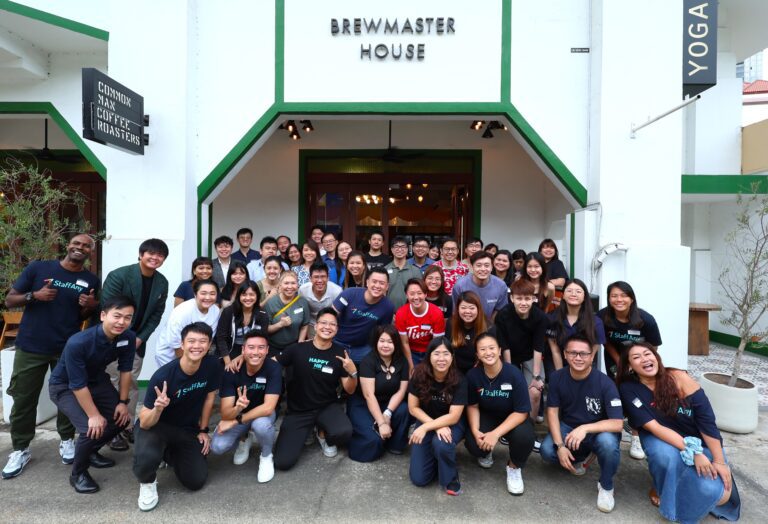Scheduling may just be one part of daily operations but it’s no piece of cake.
Managing full timers, part timers and 3 shifts per day, it’s totally normal for managers to be spending 2 whole days to plan weekly schedules.
That’s not normal though, if you have a scheduling system which allows you to spend up to 2 hours only.
I know what you’re thinking: do we really need a scheduling system? That’s what we’re here to talk about today: 6 signs your team might really need a scheduling system

1. You’re frequently under or over staffed
It’s one of those situations you don’t want: there’s a crowd but there aren’t enough staff. Customers start to “tsk”… argh! A poor impression is the last thing you want your customers to have.
While it’s hard to always be 100% accurate in manpower allocation because of ever changing situations, here are some things you can do to ensure staffing is up to par:
Forecast from past data: Track weekly, hourly and occasion-based patterns for better forecasting and schedule planning.
Prepare for peak hours: Ensure you have staff availabilities on hand, so that any last-minute shifts can be dealt with more smoothly.
Sharing manpower across outlets: Consider getting staff from other outlets to help fill in shifts during peak periods when another outlet needs the help.
2. You’re spending way too much time on it
Managers are juggling so many things today. Staff training, daily operations and planning weekly schedules, it’s endless. However, maintaining strong operations is not just a checklist – you need the right tools in place.
Typically, managers can spend close to 2 entire days per month planning schedules. Don’t forget the time spent getting your part timers’ availabilities, sending out the schedules, making changes and communicating them. It’s the back and forth, and manual shifting that takes up the most time.
A scheduling system can potentially save you more than half the time spent on scheduling. Imagine what that would mean for your managers, and business. By having your entire team on one platform, all communication is done easily with a few clicks of the button.
Just clicked “publish” for this week’s shift?
Voila – your staff are immediately notified on mobile!
3. You’re facing internal miscommunication & schedule errors
Schedule accuracy is so important, we can’t emphasize this enough! When schedules are working fine, life goes on.
An error happens? Boom – daily operations are majorly impacted. Someone doesn’t turn up, or a shift clash is spotted too late – this leads to that dreaded last minute scramble to fill the shifts!
This is especially common in organizations with multiple shifts in a day, many part timers and also multi-outlet scheduling. Here, a scheduling system can ensure error-free scheduling by highlighting errors and that shifts match to part-timer availabilities. Error-free scheduling, gives the team a peace of mind.
4. Your staff always ask about the schedule
Everyone likes to know their commitments early, to make plans. However if this happens repeatedly, it could be early signs of staff dissatisfaction.
Plan early: Consider asking for availability and releasing schedules early. Good practices include 2-4 weeks ahead of the week so your staff have sufficient time to organize their outside-work lives.
Go digital: If not done yet, this could make a big difference. Digital schedules allow staff to access them anytime, easily to check & refer. Lesser chances of mistakes, smoother operations.
5. Your staff frequently report late for shifts
Unfortunately, poor staff performance and time theft are commonplace business problems. The good news? They can be dealt with, easily!
By having a smart clock-in function with your scheduling system, you ensure that employees only clock-in to shifts when they’re supposed to, and don’t stay longer than they’re supposed to. This not only saves the business labor costs (up to 30% for some of our customers), it builds a culture of personal ownership and responsibility.
6. Your manager looks tired 🙁
They may not say so, but if they look like it – they are probably burning out! Employees need to be equipped with the right tools in order to thrive at what they need to perform. Sometimes, you’ll be surprised by how much a scheduling system can do not just for managers, but HR as well.
On a practical note, regularly check in with your managers and ask how you can better support them. Happy managers, happy team, better customer service 🙂
Do these sound familiar?
If these signs sound familiar to you, you are likely to benefit greatly from a schedule system like StaffAny 🙂
Read case studies on how brands like Foreword, Tea Tree Cafe & The Royals schedule easily and quickly here!




